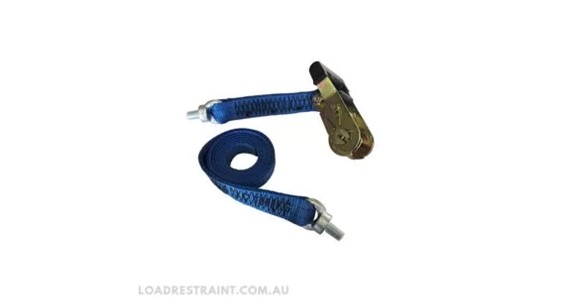Whether you work in the cargo moving industry or you simply need to move a few furniture items from point A to B, chances are you’ll need several ratchet straps. Using the proper straps is essential to ensuring that your cargo remains secure during transit.
If you’re buying tie down straps for the first time, it’s important to note our experts’ advice. They’ve drawn up a list of factors that will help you choose the right ratchet straps for the type of items you want to move.
Pointers to Consider Before You Go Ratchet Strap Shopping
Tow straps can be used for a variety of uses. Some of the more common reasons people use them include towing vehicles as well as strapping down cargo such as furniture and boxes. That said, while these straps may look the same, they are not a one-size-fits-all purchase. These are the factors to consider before making your selection.
-
Consider the Weight Capacity
The most important factor to consider when choosing ratchet straps is the weight capacity. That means you need to know what the total weight of your cargo will be. Essentially, weight capacity measures the safe working load limit (WLL) which decides the maximum weight the strap can handle before tearing or snapping.
This means that if your cargo weighs about 500 kgs (1,000 lbs.) then you will need to use two ratchet straps, each with a WLL of 250 kgs (500 lbs.) or greater.
Our experts recommend that you should always use ratchet straps in pairs to provide maximum support. If one strap snaps, you will still have the other one to hold the load.
-
Determine the Length You’ll Need
Another point to take note of is that all straps aren’t the same length. You will need to measure the length from one tie-down point to the other.
Remember that you need to measure OVER the cargo. Simply measuring from one end of the trailer to the other may not give you the correct measurement, since you’re not allowing for the height of the cargo. You also don’t want straps that are too long because this can cause the straps’ unused sections to flap in the wind, which can be a distraction to other drivers.
-
Ensure the Ratchet Straps Aren’t Damaged
If you’re borrowing ratchet straps rather than buying a set of new ones, you will need to check for any potential damage that could affect the safety of your cargo. Here are a few crucial features to look for during inspections:
- Broken or worn stitches: Keep in mind that any damage to the straps will cause them to tear or snap more easily. You should also look out for holes, tears, or any types of weld splatters that may have fallen on the straps, weakening the fibres.
- Knots: Some people choose to knot their straps when they’re too long. They may also have knotted a strap to join to broken pieces in an emergency. Be sure to check that the strap is secure under the knot.
- Corrosion to metal parts: Ratchet straps use buckles and end fittings that are made of metal. Over time, these can rust, corrode or become bent or distorted. This can also happen if the tie-down straps are used in wet or humid climates or aren’t stored correctly. Check for this beforehand and replace the hooks or buckles if necessary.
- Test the strength: Check that the straps will be able to hold the weight capacity of your intended cargo. You should be able to see this on the identification tag attached to the strap. Be wary of straps that no longer have their tags on. When in doubt, rather purchase new tie-down straps.
- Make sure there’s more than one: As we’ve mentioned before, always opt for two straps. Ideally, these straps should be similar in their weight capacity and length.
-
Ease of Use
Some ratchet straps have complex ratchet release systems or tough grips which make them difficult to use, slowing down your workflow. Using a strap with rubberised handles will make the strap easier to use. You also want to choose a ratchet strap design that grips and releases easily.
Another expert tip worth keeping in mind is that ratchet straps pulled too tightly over the edges of your cargo may cause damage. In this case, you should opt for pallet angles to safeguard your cargo. Essentially these items look like the corners of a box and slide over the item you want to tie down. The strap goes over the pallet angle to ensure that the strap doesn’t “cut” into the items.
Click here – 5 Tips for Preparing Your Pet for an Interstate Home Move
Final Thoughts
Ratchet-tie down straps are very versatile. By investing in a few quality tie-down straps and pallet angles you’ll know your cargo is safe and secure. Whether you’re moving some furniture items a few blocks away or you’re towing a vehicle across the country, you’ll have peace of mind that it will be done safely—to the benefit of yourself and others on the road!






